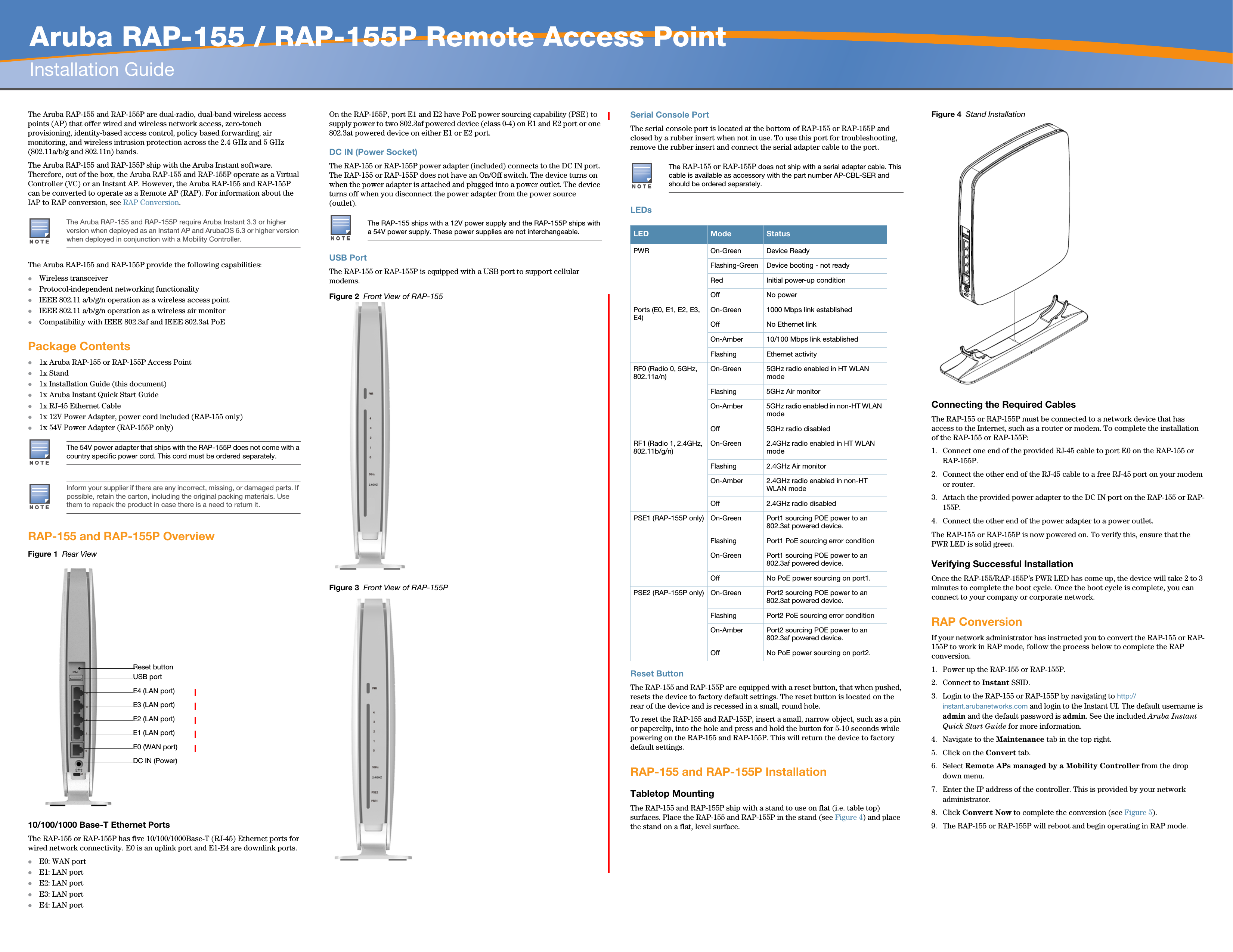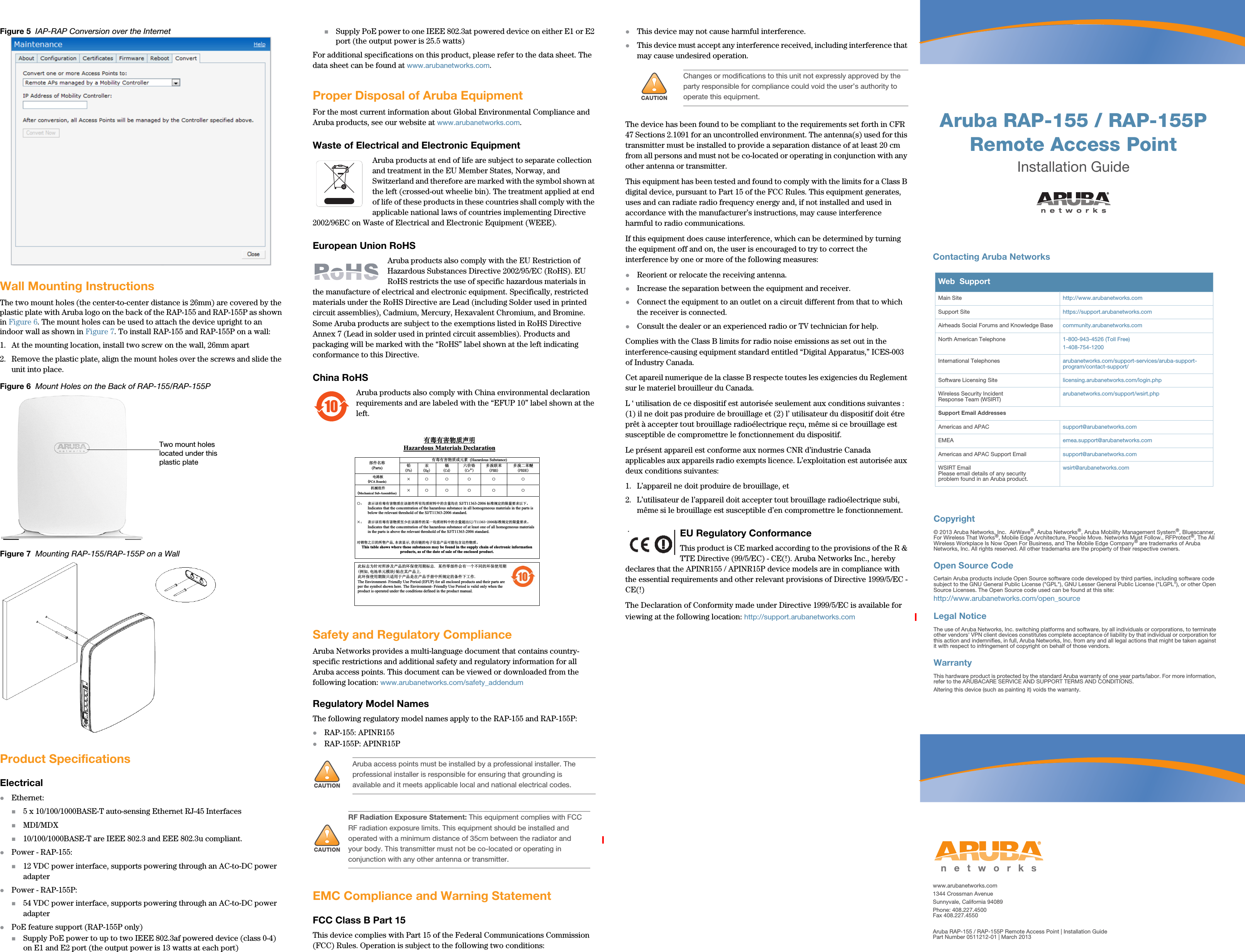Hewlett Packard Enterprise APINR15515P Wireless Access Point User Manual Aruba RAP 155 155P Installation Guide
Aruba Networks, Inc. Wireless Access Point Aruba RAP 155 155P Installation Guide
Contents
- 1. Installation Guide
- 2. Installation
Installation Guide

